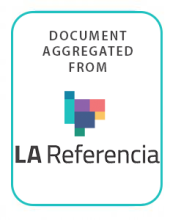Land Library
Bienvenue dans la bibliothèque du Land Portal. Explorez notre vaste collection de ressources en libre accès (plus de 74 000), comprenant des rapports, des articles scientifiques, des articles de recherche, des publications évaluées par des pairs, des documents juridiques, des vidéos et bien plus encore.
/ library resources
Showing items 1 through 9 of 1850.A lot of aspects are commonly subsumed under the concept land reform. These range from redistribution to tenure and agrarian reform. What do these different concepts mean? Agrarian reform: this is the broadest term and refers to attempts to change the agrarian structure of a country.
There has been rapid growth in urban populations in Namibia (Pendleton et al, 2014). This growth is amongst predominantly amongst less educated, poorer migrants from rural areas in search of opportunities in urban areas.
Ancestral land refers to ‘land of ancestors’. That is the land occupied by ones’ forebearers for generations and left something behind of value for current and future generations. There are usually contestations as to which ancestors the land
Namibia is moving towards an urbanised country. This is illustrated by the fact that at independence Namibia was only 28% urbanized by 2011 urbanization has already grown to 42% and current projections are that by 2020 urbanization would by 66% and more than 70% by 2030.
Communal land is one of the land tenure systems in Namibia, the other being freehold land tenure system.
Namibia is compelled to observe and to undertake efforts to realise the right to adequate housing, since it has ratified the International Covenant on Economic, Social and Cultural Rights in 1994.
The dynamics of urbanization and growth of the Latin American city is due to different geographical, economic, and social factors.
Low productivity cattle ranching, with its linkages to rural poverty, deforestation and greenhouse gas (GHG) emissions, remains one of the largest sustainability challenges in Brazil and has impacts worldwide.
Determina el cambio en el uso de la tierra y la fragmentación de las zonas boscosas en el Corredor Biológico Lago Arenal Tenorio (CBLAT), en el periodo 2000 – 2017. Se utilizó imágenes del programa Landsat, a las cuales se les aplicó corrección radiométrica y atmosférica.


